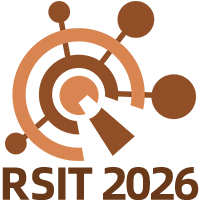 2026 2nd International Conference on Remote Sensing and Information Technology
2026 2nd International Conference on Remote Sensing and Information Technology
 2026 2nd International Conference on Remote Sensing and Information Technology
2026 2nd International Conference on Remote Sensing and Information Technology


2026 2nd International Conference on Remote Sensing and Information Technology (RSIT 2026) will be held in Zhoushan, Zhejiang, China, from May 29 to 31, 2026, hosted by Zhejiang Ocean University. Conference aims to provide a high-level platform for international academic exchange, bringing together scholars, researchers, and experts worldwide to discuss the latest advances and future directions in remote sensing and information technology.
As a strategic and interdisciplinary field, remote sensing and information technology play a vital role in global environmental monitoring, marine resource utilization, disaster prediction and prevention, smart city development, and sustainable growth. With the integration of artificial intelligence, big data, and cloud computing, this discipline is driving innovations in data acquisition, processing, and applications, offering strong technical support for addressing global challenges.
RSIT 2026 will feature in-depth discussions on topics including remote sensing data processing, intelligent information systems, marine and terrestrial applications, and environmental and ecological monitoring. The conference is dedicated to promoting cross-disciplinary collaboration, fostering cooperation among academia, industry, and research institutes.
Full Paper Submission Date: May 08, 2026
Notification of Acceptance: 15 working day after submission
Final Paper Submission Date: May 15, 2026
Registration Deadline: May 22, 2026
Conference Date: May 29-31, 2026
All submitted papers will be peer reviewed by 2-3 experts from the organizing committees. Accepted papers, following proper registration and presentation, will be included in the conference proceedings and submitted for indexing in EI Compendex and Scopus.
| Track 1: Remote Sensing Theory and Technology | Track 2: Data Processing and Intelligent Information Systems |
|
|
| Track 3: Marine, Coastal and Terrestrial Applications | Track 4: Environment and Sustainable Development |
|
|
| Host:Zhejiang Ocean University | ||
|
|
||
| Organizer:Zhejiang Ocean University School of Information Engineering | Supporter:RDLINK | |
 |
 |
|